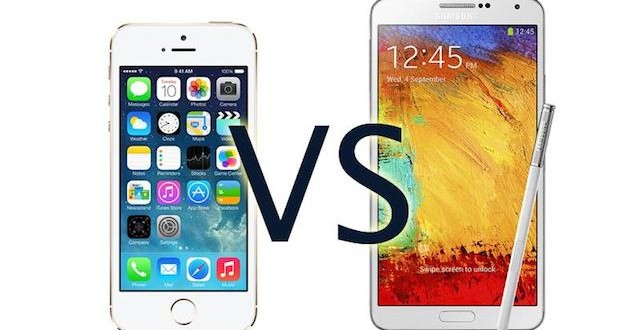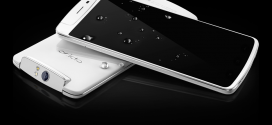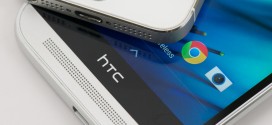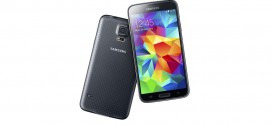Smartphone comparisons usually revolve around devices that are more or less on equal footing. These two however are quite different in many regards but that’s not to say that one is automatically better that the other. Each has their own advantages and we’re here to take a look mainly at their specs and features to see which one is the better product. With that in mind let’s take a closer look and see which one of them fits your needs.
Apple iPhone 5s
A device that’s been around since last September, the iPhone 5s is the latest product in Apple’s highly praised series of smartphones. The iPhone 5s comes with a 4-inch Retina Display that offers a 1136 x 640 resolution and provides excellent brightness and realistic colors. The smartphone also comes equipped with a 1.2 Mp front camera as well as a 8 Mp iSight rear camera which features slow-motion and burst modes.
The iPhone 5s offers a number of features, but perhaps the most interesting of them is the new Fingerprint sensor that’s placed underneath the home button. It basically allows you to unlock your phone just by touching the sensor while everyone else still needs a passcode to do so. Another interesting feature comes in the form of the M7 companion processor which powers the phone’s motion sensors. Very useful if you plan on using a lot of fitness apps and trackers.
The current iOS 7 operating system offers an improved version of Siri for voice control as well as numerous features such as AirDrop and CarPlay. When it comes to specs let’s just say that the iPhone 5s can hold its own against many of its competitors. The device comes equipped with an A7 64-bit dual-core processor , 1GB DDR3 RAM, 1560 mAh battery and a storage memory of up to 64 GB, although the base model only gives you 16 GB.
- CPU – Dual-core 1.3 GHz Cyclone (ARM v8-based) / Apple A7
- GPU – PowerVR G6430 (quad-core graphics)
- DISPLAY – Corning Gorilla Glass, oleophobic coating, 640 x 1136 pixels, 4.0 inches (~326 ppi pixel density), LED-backlit IPS LCD
- MEMORY – 16/32/64 GB storage, 1 GB RAM DDR3
- BATTERY – Non-removable Li-Po 1560 mAh battery (5.92 Wh)
- CAMERA – Primary camera 8 MP, 3264 x 2448 pixels, autofocus, dual-LED (dual tone) flash; Secondary camera 1.2 MP, 720p@30fps, face detection, FaceTime over Wi-Fi or Cellular
- VIDEO – 1080p@30fps, 720p@120fps, video stabilization
- BODY – 123.8 x 58.6 x 7.6 mm (4.87 x 2.31 x 0.30 in)
- WEIGHT – 112 g (3.95 oz)
- WIRELESS – Wi-Fi 802.11 a/b/g/n, dual-band, Wi-Fi hotspot
Samsung Galaxy Note 3
Part of a series that treads the middle ground between a smartphone and tablet, the Galaxy Note 3 is widely know as the best “phablet” around. It’s an impressive device with an equally impressive 5.7-inch superAMOLED, 1920×1080 resolution display that offers bright and vibrant colors. The camera on this device allows you to capture videos in 1080p at 60 fps and 4k resolutions at 60 fps.
The Galaxy Note 3 never goes anywhere without its trusted companion, the Stylus S Pen which has been updated over previous models and has a more symmetrical shape now. The phablet’s other companion comes in the form of the Galaxy Gear Smartwatch which is an actual watch that’s paired with the smartphone and allows you to make calls, read notifications, send messages, take pictures or run apps. The Smartwatch is priced separately, at around $300.
A device as big as this naturally comes with more impressive specs that its smaller counterparts. The standard Note 3 comes equipped with a Snapdragon 800, 2.3 GHz quad-core processor, 3GB RAM, 3200 mAh battery and up to 64 GB of storage memory, 32 GB for the base model. The phone runs the Android v4.3 JellyBean OS but can be upgraded to v4.4 KitKat.
- CPU -Quad-core 2.3 GHz Krait 400 (N9005, N9002)/ Quad-core 1.9 GHz Cortex-A15 & quad-core 1.3 GHz Cortex-A7 (N9000) / Qualcomm Snapdragon 800 (N9005, N9002)/ Exynos 5 Octa 5420 (N9000)
- GPU – Adreno 330 (N9005, N9002)/ Mali-T628 MP6 (N9000)
- OS – Android OS, v4.3 (Jelly Bean), upgradable to v4.4.2 (KitKat)
- DISPLAY – Corning Gorilla Glass 3, 1080 x 1920 pixels, 5.7 inches (~386 ppi pixel density) with Super AMOLED capacitive touchscreen
- MEMORY – microSD, up to 64 GB, internal storage 16/32/64 GB storage, 3 GB RAM
- BATTERY – Li-Ion 3200 mAh battery
- CAMERA – Primary camera 13 MP, 4128 x 3096 pixels, autofocus, LED flash; Secondary camera 2 MP, 1080p@30fps
- VIDEO – 2160p@30fps, 1080p@60fps (N9005, N9002)/ 1080p (N9000)
- BODY – 151.2 x 79.2 x 8.3 mm (5.95 x 3.12 x 0.33 in)
- WEIGHT – 168 g (5.93 oz)
- WIRELESS – Wi-Fi 802.11 a/b/g/n/ac, dual-band, DLNA, Wi-Fi Direct, Wi-Fi hotspot
- EXTRA – S Pen stylus
Who wins?
It’s a little hard to say given the fact that the two devices don’t fit into the same category. It all depends on you mostly, the iPhone 5s is much better for someone looking for a smaller phone and doesn’t care for all the extra features that the Note 3 offers. Simplicity is an advantage in some situations, plus its much easier for carrying around. But on the other hand, if want a fast and powerful device then the Samsung Galaxy Note 3 is the obvious choice.
Price-wise, it comes down to which version you prefer. The standard 32 GB Note 3 is about $300 while the standard 16GB iPhone 5s costs around $200, both on contract. Without a contract the iPhones are generally more expensive if you want more storage memory than the standard version offers.
 Load the Game Video Games, Reviews, Game News, Game Reviews & Game Video Trailers
Load the Game Video Games, Reviews, Game News, Game Reviews & Game Video Trailers



